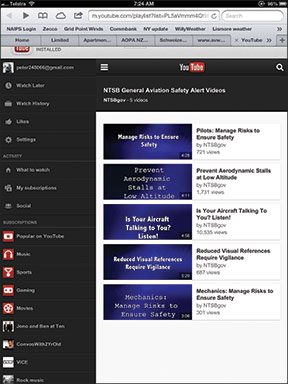I enjoyed reading “Wrong Airport, Wrong Runway” by Mike Hart in your January 2014 issue and appreciate his stressing the use of data to overcome errors and biases. One tool I find useful when approaching an airport with two runways pointing in similar directions is my direction indicator, HSI or not.

288
I look at the designated runway headings on my indicator and note their relative directions to my line of flight. This observation has prevented me from landing on the wrong runway more than once!
Another tool is the heading signal from an ILS, should your landing runway have one. I tune in the ILS frequency and point the needle to the runway heading. Using a runway’s ILS signal can be particularly helpful for finding the correct runway during night VFR operations or in hazy conditions.
Jacqueline Siegel
Via e-mail
Using the heading indicator—no matter what kind—was something we were taught, also, and is a good recommendation. Since that article appeared, two Southwest Airlines pilots joined the wrong-airport club, this time at Branson, Mo.
We totally understand how something like this can happen, and so should everyone else. And we maintain that there are those who have, and those who will land at the wrong airport or on the wrong runway.
But it’s still up to us pilots to avoid these events by using all the tools available and applying a modicum of skepticism, with a healthy dose of responsibility. Has automation gotten so good we just expect things to work out as planned/programmed and go back to playing with the iPad?
Missed Opportunity
I’ve really enjoyed reading Mike Hart’s articles in the last few issues, but I feel like his piece “Embracing Risk” was something of a missed opportunity. I would like to have seen a much-expanded discussion of “expanding the envelope” of one’s experience.

288
This is a big area, one where new pilots are given few practical tips and lots of Annoying Aviation Adages (“Better to be on the ground wishing you were in the air” and so on).
I practice, and teach, the concept of consciously expanding your envelope in one axis at a time. Perform the usual risk assessment using the recommended tools, e.g., PAVE. Go into detail, looking at all aspects in particular of the aircraft (make/model familiarity, avionics, state of repair, etc.) and environment (day/night, weather, departure/destination areas). If one and only one of these aspects gives you pause, you may consciously accept the added risk and go for it.
For example, if you aren’t fully comfortable at night but your departure and destination are familiar, the weather is good and the aircraft is one you are comfortable with, I say bring your A-game and do the flight. If you’re going somewhere unfamiliar, or mountainous, or small, or if the forecast is iffy, or your favorite rental is down for maintenance so you’re taking one with a different GPS, stay home.
Perhaps if two aspects make you only very slightly nervous, accept the added risk and try it. The idea is to allow yourself to grow as a pilot while keeping the unfamiliar variables to a minimum.
Gilead Wurman, CFI
Via e-mail
Some good points and ideas, Gilead. There’s no question pilots looking to expand their personal envelope would be well advised to push in one direction at a time.
One way we were taught to think about it is this: When too many of the proposed flight conditions start to pile up on the bad side of the scale, what are you going to put on the good side to balance it all out?




